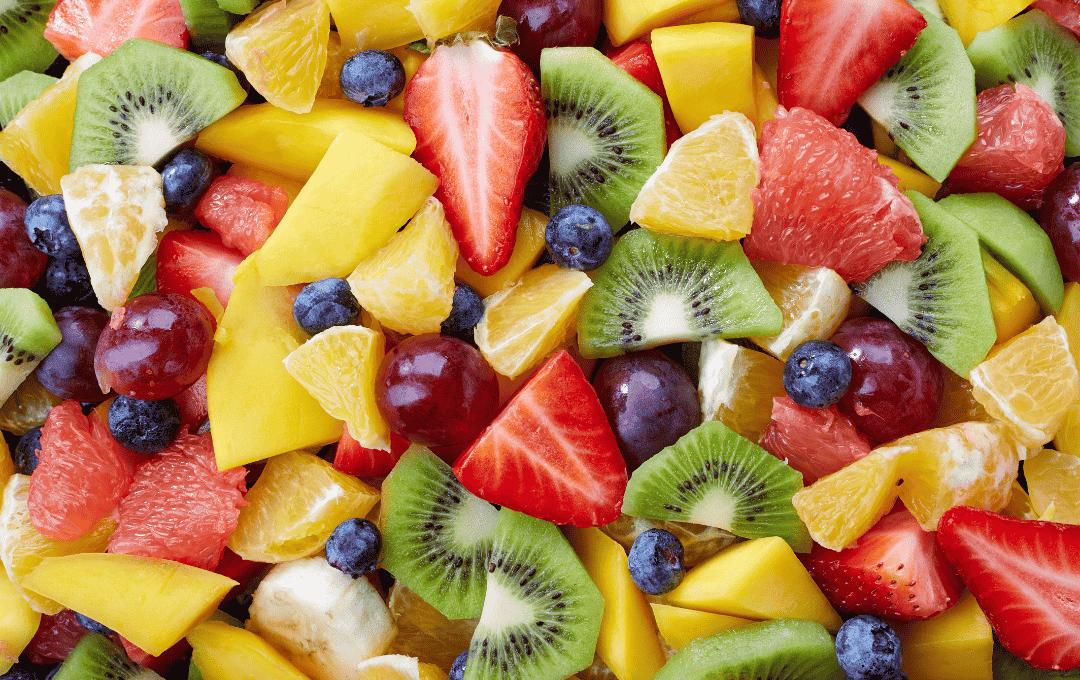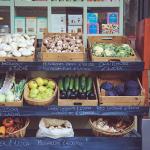
Ever wonder if the saying “you are what you eat” applies to your body’s circulation? If you’ve experienced cold hands and feet, leg swelling, or tired, achy legs, your diet could be a factor. Healthy blood circulation is essential for everything from your vein function to your overall well-being. When blood flow is restricted, it puts extra pressure on your veins, which can lead to issues like varicose veins and chronic venous insufficiency.
While medical treatments are crucial for serious circulatory problems, simple lifestyle changes—like a balanced diet—can be a powerful tool. This blog will explore the best foods that can improve blood flow and support long-term vein health, providing you with the knowledge to take a delicious first step toward understanding how your diet supports overall vein function.
Our Vein-Friendly Grocery List
Why Blood Circulation Matters—Especially in the Legs
Maintaining healthy leg circulation is vital for your comfort and to prevent long-term health issues. Daily dietary support, hydration, regular physical activity, and early treatment of vein issues all contribute to maintaining the overall health of your circulatory system.
Can Certain Foods Increase Blood Flow?
Certain foods—such as fruits, vegetables, whole grains, and healthy fats—can increase blood flow by preventing blood clots, widening blood vessels, and reducing inflammation.
Best Foods That Increase Circulation
Here are a few of the best foods that improve circulation. Having low blood pressure reduces the strain on artery walls, allowing blood to circulate through the body more easily.
Fruits
Foods marked with an asterisk (*) also help lower blood pressure.
- Citrus*: Fruits like oranges, lemons, and grapefruits contain antioxidants, including flavonoids, which help relax your blood vessels and improve blood flow. Since citrus can help reduce inflammation in your body, it can decrease stiffness and lead to better blood flow.
- Berries*: The antioxidants in berries, such as blueberries, blackberries, cranberries, raspberries, strawberries, hawthorn berries, and currants, contain anti-inflammatory properties that can help lower blood pressure and improve circulation. Berries also contain anthocyanins, which not only give the berries their color but also help protect your artery walls from damage and prevent plaque buildup. These powerful antioxidants can also help strengthen the walls of your veins, improving overall vascular health.
- Bananas*: This versatile fruit is a good source of potassium and vitamin B3. Eating bananas regularly can help relax blood vessels by balancing sodium levels and encouraging better blood flow. Potassium also helps reduce the risk of hardening of the arteries, promoting healthy circulation.
How Fruits Promote Good Blood Circulation and Healthy Veins
The vitamins and antioxidants from these fruits help with blood circulation and are crucial for maintaining the strength and elasticity of your vein walls. With strong and flexible veins, you reduce your risk of developing varicose veins and other vein issues.
Proteins
Foods marked with an asterisk (*) also help lower blood pressure.
- Fatty Fish*: If you’re looking for the best food for blood circulation, consider adding fatty fish, such as salmon, mackerel, tuna, trout, sardines, and herring. They hold high levels of omega-3 fatty acids that release nitric oxide into the body. Nitric oxide dilates blood vessels, thereby increasing blood flow. Omega-3 fats also help prevent blood clot formation and plaque buildup in the arteries.
- Yogurt*: Yogurt’s positive effects on blood pressure regulation are due to calcium. Adequate calcium intake supports normal blood pressure, which is essential for proper blood flow. Yogurt also provides other beneficial nutrients that support blood pressure regulation, including potassium and magnesium.
- Shiitake Mushrooms*: Shiitake mushrooms support heart health by helping to lower ‘bad’ (LDL) cholesterol. They are also rich in antioxidants and possess anti-inflammatory properties that help protect blood vessel walls from damage, which in turn can help prevent the buildup of plaque. Additionally, compounds in shiitake mushrooms may help stimulate the body’s production of nitric oxide. This molecule naturally relaxes blood vessels, allowing blood to flow more freely. Their significant copper content further supports healthy blood vessels and connective tissue, making them a valuable part of a heart-healthy diet.
How Omega-3s and Protein Support Your Veins
Proteins and healthy fats reduce inflammation that can compromise vein health. These nutrients keep the arteries clear and blood flowing smoothly, thereby decreasing the pressure on veins and supporting their long-term function.
Vegetables
Foods marked with an asterisk (*) also help lower blood pressure.
- Beets*: Beets contain nitrates, which the body converts into nitric oxide, which relaxes your veins so blood moves more freely. They may also enhance oxygen delivery in the body, thereby boosting physical performance and endurance. Beet juice can widen arteries, lower blood pressure, and improve athletic endurance.
- Dark Leafy Greens*: Spinach, kale, and other dark leafy greens are excellent sources of vitamins C, E, and K. These vegetables are powerful foods that increase blood circulation, since they also provide potassium and magnesium, which support healthy arteries and blood pressure. Eating a green salad daily or adding greens to smoothies, soups, and egg dishes can help you maintain healthy collagen levels and blood vessel elasticity.
- Onions: Onions are an excellent source of flavonoid antioxidants, which benefit heart health and improve circulation by dilating your arteries and veins. The flavonoid antioxidants can reduce inflammation in both arteries and veins. Onions can help reduce plaque buildup in the arteries.
How Vegetables Help Prevent Vein Conditions
The nitrates and vitamins in these vegetables improve blood vessel flexibility, allowing them to better handle blood pressure changes and pump blood efficiently back to the heart. As a result, they can more easily defend against chronic venous insufficiency (CVI).
Grains and Nuts
Foods marked with an asterisk (*) also help lower blood pressure.
- Oats*: Oats contain copper and magnesium, which help prevent high blood pressure. They are also rich in a particular group of antioxidants called avenanthramides, which open blood vessels to reduce inflammation.
- Nuts: Packed with nutrients such as vitamin E and L-arginine, nuts, like walnuts and almonds, promote the body’s production of nitric oxide, which relaxes the veins, allowing blood to flow more freely. This process encourages blood vessel elasticity.
How Oats and Nuts Support Your Veins
The antioxidants and minerals in oats help relax blood vessels and reduce inflammation, which supports healthy circulation. Nuts like almonds and walnuts have nutrients that help your body produce more nitric oxide, which keeps blood flowing smoothly. This can help lower the risk of potential vein problems.
Does Spicy Food Increase Blood Circulation?
In moderation, spicy foods like cayenne pepper can help boost blood circulation by stimulating the production of nitric oxide, a key component in maintaining healthy blood flow, as it expands or widens blood vessels. Capsaicin is the compound in cayenne pepper that enhances circulation, reduces inflammation, and helps lower blood pressure.
What Drinks Are Good for Blood Circulation?
Proper hydration, achieved by drinking water, supports blood volume and helps transport oxygen and nutrients throughout the body. Beyond water, drinks like beetroot juice offer additional benefits that boost circulation.
Some of the best beverages for blood circulation include:
- Pomegranate Juice: With antioxidants and vitamin C, pomegranates reduce inflammation and ultimately boost blood circulation.
- Green and Black Tea: These teas are rich in flavonoids and antioxidants, which are beneficial for overall circulation.
- Orange Juice: Offers vitamin C and antioxidants, which help lower inflammation and promote healthy blood flow.
Circulation Tips Beyond Diet
If you want natural ways to improve blood flow, a healthy diet is just the start. Here are some other habits that support better circulation:
- Exercise regularly: Activities like walking, swimming, or cycling stimulate blood flow and strengthen the heart.
- Reduce salt intake: High sodium levels elevate blood pressure, which makes it harder for blood to flow efficiently.
- Avoid sitting or standing for too long: Taking breaks to stretch or walk around prevents blood from pooling in the legs.
How to Improve Blood Circulation Fast
Tips to help enhance blood circulation quickly include focusing on foods that improve blood circulation in the legs, elevating your legs, taking a brisk walk, or doing gentle stretches. While lifestyle changes can be beneficial and provide temporary relief, they are not a substitute for medical care. If symptoms of poor circulation persist, consult a healthcare provider to rule out underlying issues.
When Poor Circulation Could Be a Vein Issue
When veins become weak or damaged, particularly in the legs, they may struggle to pump blood back to the heart. This is often due to chronic venous insufficiency (CVI), a condition that causes blood to pool in the veins rather than flow normally. Poor circulation can also result from peripheral artery disease (PAD), which limits blood flow through narrowed arteries. If you’re concerned about a possible vein issue, our free vein symptom quiz can help you decide whether it’s time to see a specialist.
Vein Treatment for Better Circulation
Even though diet and exercise play a significant role in making sure your veins function, they can only help so much if an underlying vein condition is causing your circulation issues. In these cases, medical treatment may be necessary to restore proper blood flow. Treating damaged veins helps reduce pressure in the legs, improves circulation, and prevents symptoms such as swelling, cramping, and fatigue from worsening over time.
That’s where USA Vein Clinics comes in. We specialize in minimally invasive treatments, such as Endovenous Laser Vein Treatment (EVLT) and sclerotherapy, that address the root cause of vein disease that a healthy diet cannot fix. These outpatient procedures have shorter recovery times and are often covered by insurance, including Medicare and Medicaid.
Contact USA Vein Clinics
If you’re concerned about symptoms such as leg swelling, fatigue, or visible veins, consult with a vein specialist at USA Vein Clinics for a proper diagnosis. Our vein specialists will work with you to create a personalized treatment plan for lasting symptom relief.
FAQs About Food and Blood Circulation
Can a poor diet cause circulation problems in the legs?
A poor diet can contribute to circulation problems in the legs, particularly by increasing the risk of conditions like peripheral artery disease (PAD). However, a diet of leafy greens, beets, berries, and other foods that naturally increase circulation can help support your health.
Does Drinking Water Improve Blood Circulation?
Drinking water improves blood circulation by helping your body maintain the right amount of blood flow.
How long do diet changes take to improve circulation?
Dietary changes can improve circulation. Foods like garlic and walnuts may offer noticeable benefits within a few weeks, while broader improvements from a balanced diet typically take several months.
Are supplements as effective as circulation-friendly foods?
Eating circulation-friendly foods is generally more effective than relying solely on supplements, as the vitamins, minerals, antioxidants, and other compounds from these foods work together to support your overall health.











